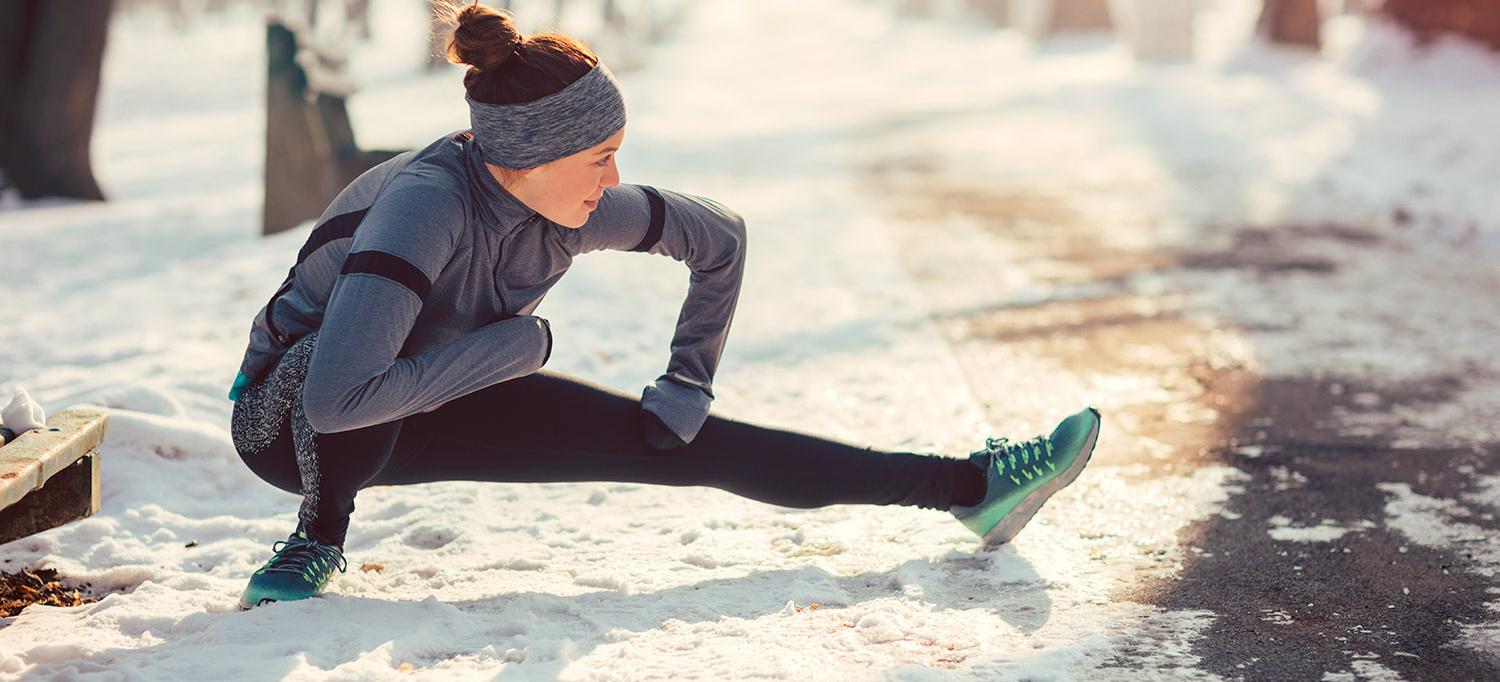Cold weather running tips can help runners stay active, safe, and comfortable throughout the chilly winter months. Running in colder conditions can be invigorating, but it also presents unique challenges, from slippery paths to maintaining body warmth. Here, we’ll cover essential tips for staying safe, warm, and injury-free when hitting the pavement in winter.
Cold Weather Running Tips: Essential Advice for Winter Workouts
Running in the cold requires a little extra planning, but with the right strategies, you can enjoy your runs no matter how chilly it gets. Here are some core tips to ensure your cold-weather runs are safe and enjoyable.
Dress for Success: Layer Up Wisely
Layering is your best defense against the cold. It keeps your body warm while allowing you to adjust as you heat up during the run.
1. Base Layer: Start with a moisture-wicking base layer made of synthetic or merino wool. This layer pulls sweat away from your skin, keeping you dry and warm.
2. Insulating Layer: Over the base, add an insulating layer, like fleece, to trap body heat without adding too much bulk.
3. Outer Layer: Finish with a wind- and water-resistant outer layer. This jacket should be breathable enough to let sweat escape, yet protect against wind and moisture.
Protect Your Extremities

Cold weather can be hardest on the areas of your body furthest from your core: hands, feet, and head.
- Head and Ears: Wear a thermal hat or headband that covers your ears. This helps prevent heat loss, as up to 10% of body heat escapes from the head.
- Hands: Opt for thermal gloves or mittens. Mittens can sometimes be warmer than gloves, as they trap the heat from all fingers together.
- Feet: Choose warm, moisture-wicking socks, like wool-blend socks, to keep your feet dry. Some runners layer thin socks with thicker socks for added warmth.
Preparing for a Cold-Weather Run

Proper preparation is essential before stepping outside in freezing temperatures. Here are some important pre-run steps to take.
Warm Up Indoors
Cold muscles are more prone to injury, so warm up indoors to increase blood flow and flexibility before heading out.
- Try light stretching and dynamic movements like leg swings, high knees, or jumping jacks.
- You can also consider using a heating pad briefly on larger muscle groups to warm them up before stretching.
Stay Hydrated
In winter, it’s easy to overlook hydration, but it’s just as crucial as in the summer.
- Pre-Hydrate: Drink water before heading out, as cold weather can reduce your thirst response.
- During the Run: For longer runs, bring water along, especially if you’re out for more than an hour. Hydration helps your body regulate temperature and maintain energy.
Skin Protection Against Cold and Wind
Cold, dry air can be harsh on your skin. Protect exposed areas with a moisturizer or barrier cream to prevent chapping.
- Apply a wind-resistant balm to your face, particularly on the cheeks, nose, and lips.
- Sunglasses can help shield your eyes from the drying effects of cold winds and bright sunlight reflected off snow.
Safety Tips for Running in Cold Weather

Staying safe while running in the cold requires some extra caution, especially if the weather is icy or visibility is low.
Run in Daylight When Possible
Running in the daylight increases visibility and can help you avoid icy patches. If you must run early or late, follow these precautions:
- Wear reflective clothing or a running vest with built-in lights.
- Use a headlamp to illuminate the path ahead and ensure you’re visible to others.
Be Aware of Ice and Snowy Surfaces
Slips and falls are more common in winter, so take extra care on icy or snow-covered paths.
- Stick to well-cleared trails and sidewalks. Avoid running on snow if possible, as packed snow can hide ice underneath.
- Traction Devices: If ice is unavoidable, consider attaching traction cleats to your shoes. These devices improve grip and reduce the risk of slipping.
Adjust Your Pace
Running in cold weather places added stress on the body, so don’t push for your fastest pace.
- Focus on effort rather than speed. Running slower helps your body adapt to the cold and can reduce the risk of muscle strain.
- Plan for shorter, more frequent runs rather than long, intense sessions on extremely cold days.
Post-Run Care: Recovering After Your Winter Workout

Once you’ve finished a cold-weather run, take these steps to warm up and care for your body.
Change into Warm, Dry Clothes Immediately
Sweat can cool quickly in cold air, which can make you feel chilled soon after finishing. Change out of damp clothes as soon as possible:
- Have warm, dry clothes ready to put on right after your run.
- Use a fleece blanket or heating pad to warm up if you’re still feeling chilled.
Refuel and Hydrate
Recovery is essential after a winter run. Eating and drinking the right foods can speed recovery and help regulate body temperature.
- Warm Drinks: Sip on hot tea, cocoa, or a warm sports drink to raise your core temperature.
- Protein and Carbohydrates: Fuel up with a balanced snack to aid muscle recovery. Try oatmeal with fruit or a smoothie with protein powder.
Winter Running Gear: Essentials for Cold-Weather Comfort

Investing in reliable winter gear can make a significant difference in your comfort and performance.
- Thermal Base Layers: These keep you warm without added bulk.
- Weatherproof Jacket: Choose one that blocks wind and repels moisture.
- Reflective Accessories: A vest, headlamp, or flashing lights make you more visible in low light.
- Traction Cleats for Shoes: These provide extra grip on icy surfaces.
- Moisturizing Lip Balm: Protects lips from chapping in cold, dry air.
Final Thoughts for a Safe Winter Routine
With the right approach, running in cold weather can be refreshing and rewarding. These cold weather running tips can help you stay safe, warm, and motivated even when temperatures drop.
Remember, winter running is about staying consistent and smart—dress appropriately, prepare thoroughly, and take it slow if needed. With a bit of planning, winter can become a great time to reach your running goals.
Boosting happiness through exercise goes beyond physical benefits; it’s about joy and connection. Take workouts outdoors to uplift your mood, use music for motivation, join group activities for community, rediscover activities you love, and practice gratitude for your body. Embrace movement as a path to well-being and fulfillment.



